|
|
|
Clark County Press, Neillsville, WI April 27, 1994, Page 28 Transcribed by Dolores (Mohr) Kenyon. Index of "Good Old Days" Articles
|
|
|
|
Clark County Press, Neillsville, WI April 27, 1994, Page 28 Transcribed by Dolores (Mohr) Kenyon. Index of "Good Old Days" Articles
|
Good Old Days
By Dee Zimmerman
In making an account of Neillsville and its people, one name to be included, would be that of Richard F. Kountz. A man of endless energy, vigor in enthusiasm and purpose, he became a stalwart supporter in early Neillsville’s growth.
Born October 23, 1848, in the great industrial city of Pittsburgh, Kountz apparently adopted the spirit of enterprise which surrounded him. He was a resident of that city until reaching the age of 19 when he accompanied his brother, W. H. Kountz, to Black River Falls.
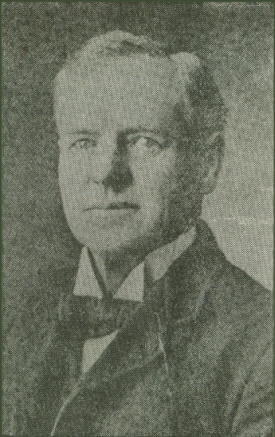 |
Richard F. Kountz
Kountz, born in Pittsburgh, came to Neillsville in 1874, as a young man, and remained here actively supporting the city’s growth.
Kountz came to Neillsville in 1874, where he established a grocery business. He bought out James O’Neill, Sr. running his store in a building on the corner of Sixth and Hewett. He ran the business for two years, and then sold out to Hewett and Woods, who continued the grocery business.
Turning to law, Kountz applied himself diligently in studying and was admitted into law practice in 1878. He set up his office in the court house, occupying rooms with Sheriff Thos. B. Philpott.
The need of a railroad was becoming more urgent in the 1870’s, sparking the idea of organizing the Black River Railroad Co. with Kountz as its secretary. Other influential citizens were N. H. Withee, James Hewett, D. Gates, Geo. L. Lord, James L. Gates and Free Lindsay.
In August of 1880 work of grading the railroad bed from Merrillan to Neillsville, a distance of 14 miles, was started. Sixteen months later, January 5, 1881, the job was completed with rail laid, engine and cars on track with all equipment necessary for operation. The first run consisted of an engine and two freight cars, was run to Neillsville.
Through determination and public spirit, the railroad line to Neillsville was realized. On July 4, 1881, Neillsville had a big celebration and the railroad was officially opened for public traffic with a great attendance of area residents.
The first depot was located on the west side of the Black River, also west of town. The old station house was brought there on a flat car from Valley Junction.
The railroad was sold to “Omaha” and in 1885 it was brought across the river, with the depot, to be located between 7th and 8th streets, west of Clay Street. The old depot was used as a coal shed after being moved near the new depot building.
The “Omaha” extended the rail line to Marshfield in 1889.
James Flynn was the engineer and Dennis O’Grady served as fireman on that railway branch from the beginning to many yeas later.
A terrible electrical storm hit the city on May 6, 1875. Lightening struck the M. C. Ring house, a house on the O. Radke property and the O’Neill house, setting all three afire within a time period of twenty minutes. The circumstances of three fires all at the same time set the Neillsvillites into a panic. Everyone was in agreement that the city needed a fire department.
A meeting was held in the old courthouse for the purpose of organizing a fire department. Kountz was one of the motivators in its organization. He said at the first meetings, the enthusiasm was so great that the people believed they could buy out the whole apparatus used in the City of Chicago! They decided to organize in three divisions – an engine company, hook and ladder company and a “gunny sack” company. The third company was to carry gunny sacks and in case of fire rush in and carry out the goods in the sacks! The only company to finally get into working order: however, was the hook and ladder company.
Kountz was the first fire Chief of the Company and J. W. Hommel was its first captain. There wee 20 to 30 firemen and they held public dances to pay for the hook and ladder wagon. One dance was held in the city hall and another in the new courthouse.
After the city was incorporated in 1882 it was considered necessary to have a waterworks system. Kountz was appointed chairman of the committee to let the contract for construction of such a system. The dam for the water supply was built at that time, but in 1896 the water supply failed and the plant was moved to be built on the river.
In 1885, some of the citizens organized the Electric and Water Supply Co. at which time Kountz was appointed secretary of the company.
Other positions added to his busy life were those of city attorney, member of county board, police justice, plus many other offices.
Indeed he did actively participate in early Neillsville’s development.
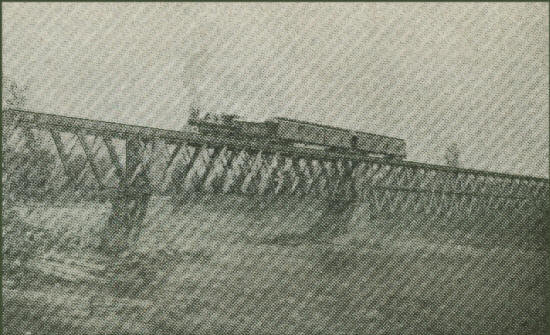 |
The first train into Neillsville – 1887, consisted of the engine and two cars shown on the trestle over Black River. In 1881, the road and service extended from Merrillan to the edge of Neillsville on the west side of the Black River. In 1887 the railroad crossed the river into Neillsville and in 1890-91 completed its line across the entire county.
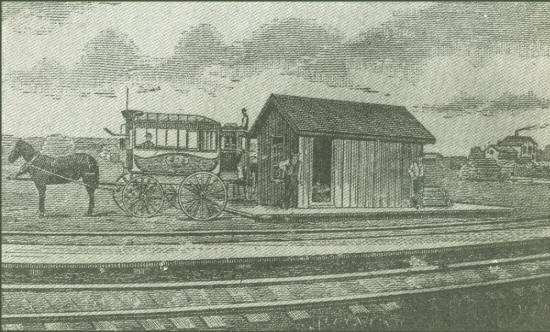 |
The old Neillsville Depot: Neillsville’s first depot was located on the west bank of Black river. After the railway trestle was built, enabling the train to enter the city, a new depot was built between 7th and 8 Streets in 1881.
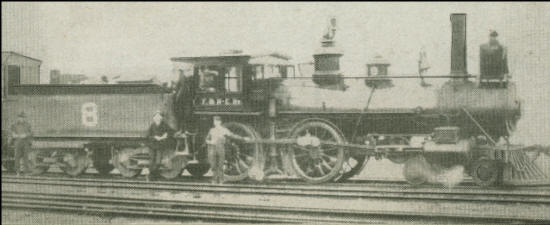 |
The Taunton #8 engine, 4-4-0 type, ran the Foster & Northeast railroad through Clark County in the late 1800’s.
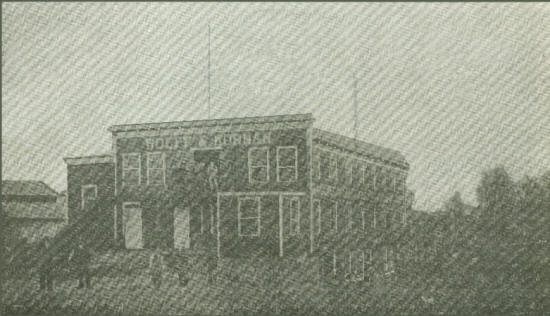 |
Wolff & Korman Manufacturing: the factory of Wolff & Korman was located on the north side of O’Neill Creek and east side of Hewett Street, now the site of the Kwik Trip. Wolff was the blacksmith.
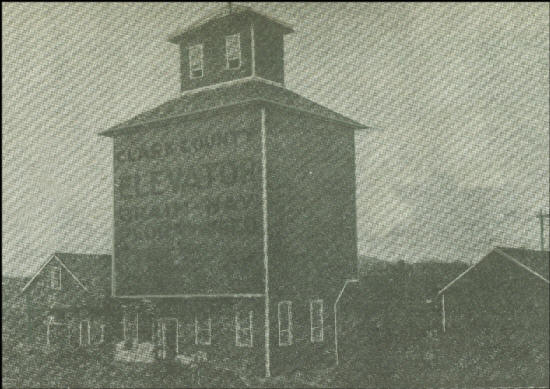 |
The Clark County Elevator Co., located along 7th Street, between Clay and Oak was originated by A. B. Marsh. Marsh was born at Mapleworks, now named Granton, in 1860. He graduated from the Northwestern Business College, Madison, in 1882. Shortly after graduating, Marsh became owner of the Clark County Elevator, being in the grain business for several years, thereafter. The elevator had a capacity of 30,000 bushels with a good cement bottomed basement equipped with corn sheller, magnetic separator and other machines. The first floor had a large feed grinding machine, cob crusher, receiving separator, weigh hopper, etc. Power was produced by a 35 h.p. gasoline engine. The Clark County Elevator is now the local of the Cenex Cooperative Feed Mill.
|
© Every submission is protected by the Digital Millennium Copyright Act of 1998.
Show your appreciation of this freely provided information by not copying it to any other site without our permission.
Become a Clark County History Buff
|
|
A site created and
maintained by the Clark County History Buffs
Webmasters: Leon Konieczny, Tanya Paschke, Janet & Stan Schwarze, James W. Sternitzky,
|